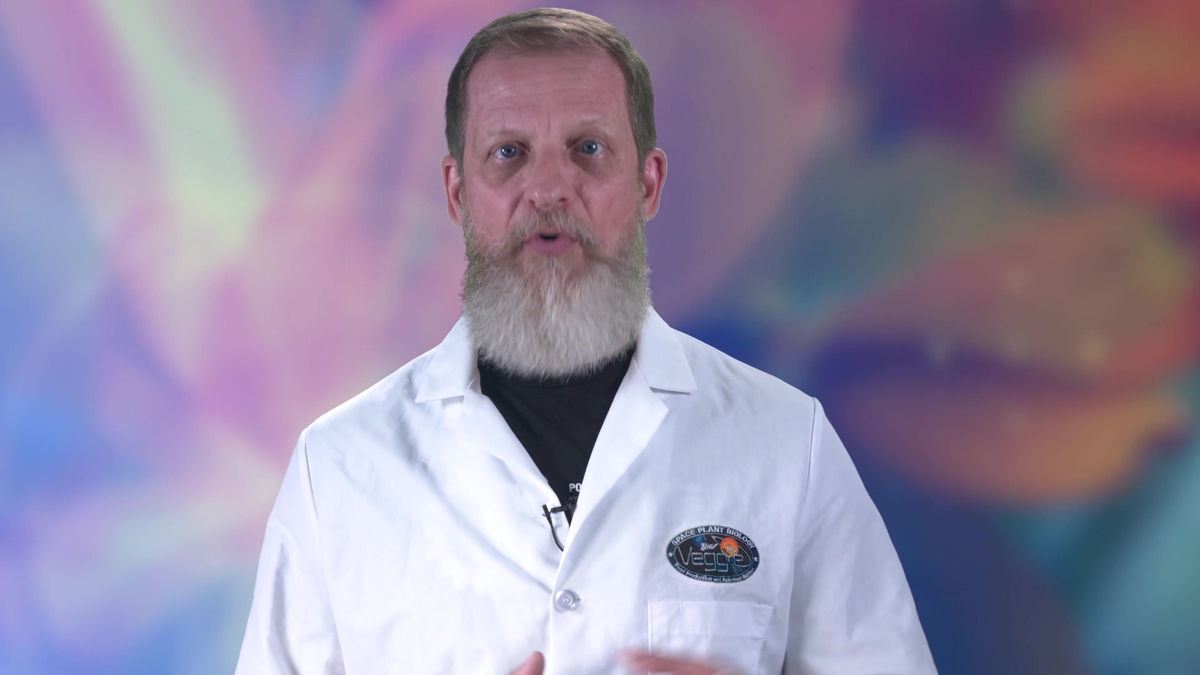
Welcome to Fairchild's Growing Beyond Earth 2019-2020
Growing Beyond Earth (GBE) is Fairchild’s NASA-funded classroom science project designed to advance research on growing plants aboard spacecraft. As NASA looks toward a long term human presence beyond Earth orbit, there are specific science, technology, engineering, and math (STEM) challenges related to food production. GBE is addressing those challenges by expanding the diversity and quality of edible plants that can be grown in space. On Earth, GBE is also improving technologies for gardening in urban, indoor, and other resource-limited settings.

All Videos
Established in 2015 as a partnership between Fairchild Tropical Botanic Garden and NASA’s Exploration Research and Technology Programs, GBE is now underway in 130 Miami-Dade middle and high schools with a special focus on under resourced, Title 1 schools. Beginning in 2020, 100 sites have been established outside Miami-Dade, in other Florida locations and in Ohio, Pennsylvania, Nebraska, Colorado, Utah, New York, Texas, California and Puerto Rico.
GBE is unique in its focus on real scientific research, enabling student “citizen scientists” to contribute data toward NASA mission planning. Each classroom receives a Fairchild-designed plant habitat that is analogous to the plant growing equipment aboard the International Space Station (ISS). Fairchild and NASA scientists train teachers to conduct in-classroom GBE experiments, and students then share experimental data online with NASA.
Several new candidate plants have been identified for spaceflight through the GBE program. These include varieties of pak choi, cress, and kale that produced greater amounts of biomass than the varieties previously tested in NASA labs. We have observed that some plants can grow under a wide range of classroom environmental conditions, possibly indicating high adaptability and stress tolerance. Some of the best varieties from the 2015-2017 classroom studies are now in experimental trials at NASA Kennedy Space Center. Student data have also identified some unusual edible plants as possible candidates, including a tough and fast- growing succulent called ice plant (Mesembryanthemum crystallinum), and a Chrysanthemum relative called shungiku (Glebionis coronaria). To date 10 student-tested varieties have been selected by NASA researchers to be ground tested at Kennedy Space Center’s Food Production Research Area and in 2019 two of those varieties were tested aboard the ISS.

GBE also provided an opportunity to test a new leaf vegetable harvesting strategy. The new strategy, involving frequent harvesting throughout the life of a plant, was shown to be successful in classrooms during the 2015-2016 school year and have subsequently been implemented on ISS.
Teacher surveys indicate that GBE is improving STEM instruction in middle and high schools. The program is uniquely effective in serving groups that are underrepresented in STEM fields, as defined by race, gender, and socioeconomic status. Through the program, students have become more knowledgeable about STEM topics, more confident when participating in STEM activities and more interested in STEM careers.
Throughout history, plants have been essential to exploration. Today’s space travelers are continuing an ancient tradition, bringing food plants on voyages into new and unfamiliar environments. Schoolchildren can now participate in the next phase of human exploration, helping determine which plants might feed explorers on the way to Mars.

This website is based upon the work supported by NASA under grant award No NNX16AM32G.
Any opinions, findings and conclusions or recommendations expressed in this material
are those of the authors and do not necessarily reflect the views of the National Aeronautics
and Space Administration.
Copyright © 2019 Fairchild Tropical Botanic Garden, All rights reserved.

